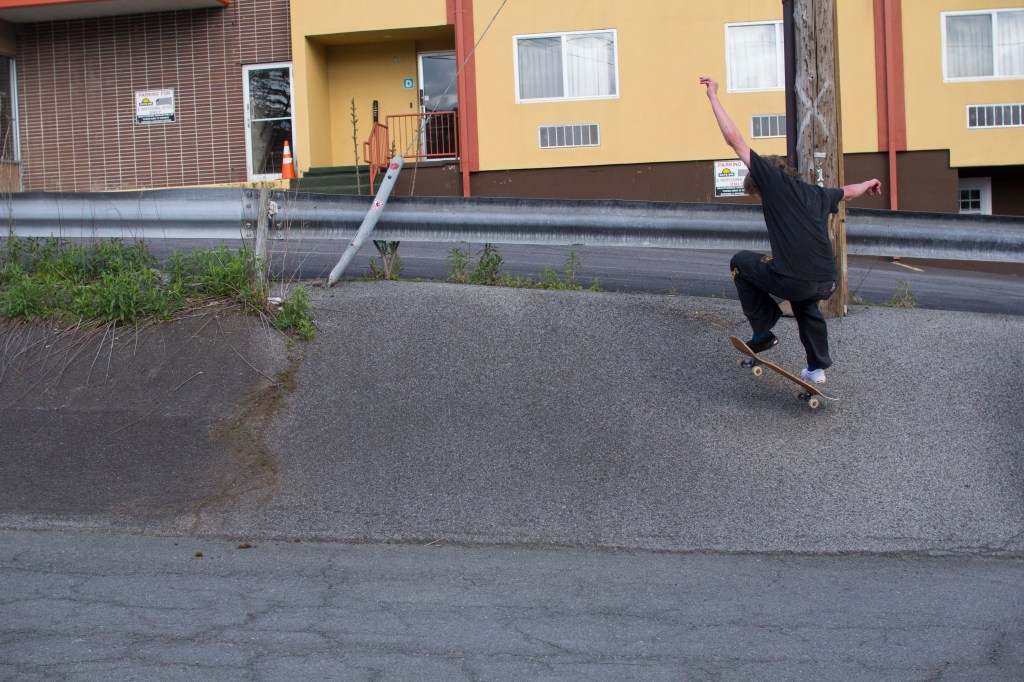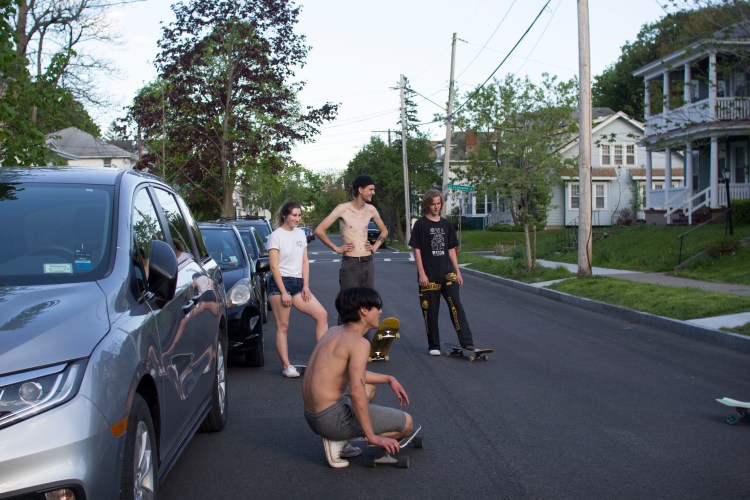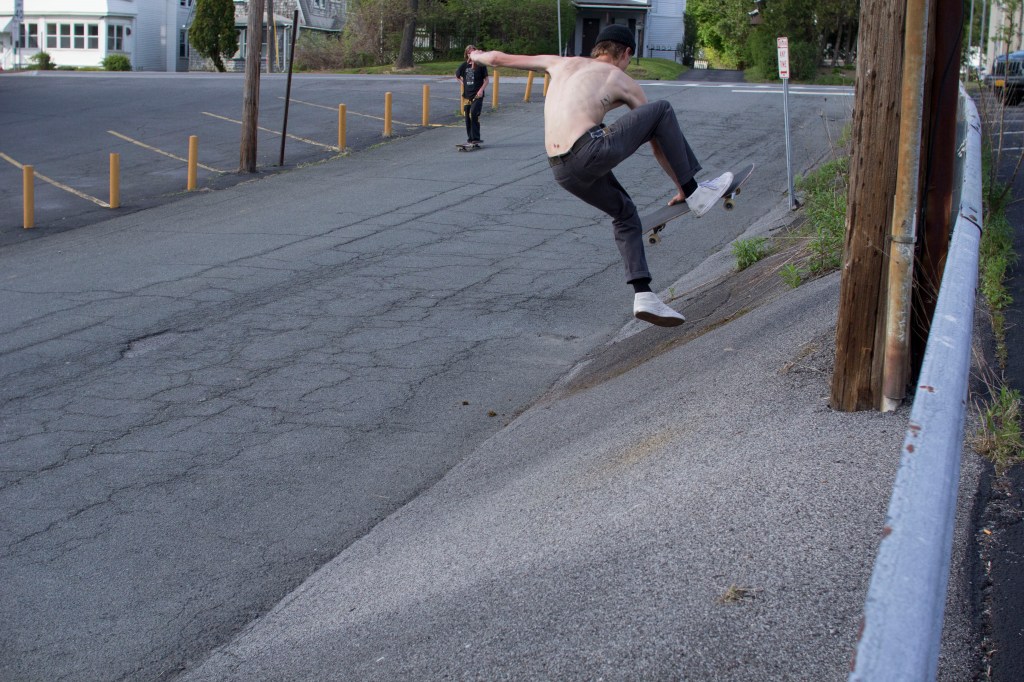Surfing, and skateboarding have a deeply rooted history in the subculture of community. Often looked at through the lens of a counterculture activity, young people for generations have been pushing their sport forward, while often being met with opposition from the majority. “Localism”, or the protection of community skating and surfing rules within an area can vary greatly from place to place. These rules are typically dubbed by those who have developed their personal style here, made claims, and want to protect what that means to them and their community. Localist mindsets vary from city to city, however its nothing to fear as long as you remember that respect is the most important part of being allowed in these sacred places. These places are as important to skaters and surfers, as the quality of the grass in your front lawn, if you are a hard worker who wants to showcase your home. If you’ve worked hard to build and preserve something at all, it feels really discouraging to be told that you are wrong, or to have someone disrespect that. With an ever expanding mindset, social media, and more acceptance and respect from the majority, the evolution of skateboarding and surfing is changing from something that was inherently only a lifestyle, to a broader, more inclusive sport built on firm values of respect, and a commitment to gnar.

The term ‘boardsports” isn’t often thrown around in regard to surfing or skating. Why is that? What sets a boundary between skating and soccer for instance? Surfing is on the world stage at the olympics, but outside of coastal places, why is surfing only thought of as a recreational activity you try out at that awkward family reunion in Hawaii? Why does skating only stream events like the Xgames? If you aren’t an adrenaline junky, would you even know what the Xgames were? Likely not. I can answer all of these questions in one statement: Investment in skaters and surfers at the athletic level is pathetic in comparison to other high budget sports. Professional sports teams have an athletic trainer on hand, chiropractors, and often massage therapists to assist and guide in proper technique, immediate treatment of injuries, and bodywork to prevent the onset of chronic injury. Boardsports is in the infancy stage of its sports therapy development. Despite common thought, here are some surprising statistics about boardsports athletes you need to know before you continue to craft an opinion about your local skaters and surfers:
- “According to the US National Library of Medicine National Institutes of Health, skateboarding is a comparatively safe sport. Published reports state that an average of 40 people die skateboarding every year. This includes longboarding.” (Statistically more people die every year from cooking dinner, and climbing on ladders, ranking in at 65, and 113 deaths.)
- “On average, there are 16 shark attacks per year in the United States, with one fatality every two years.” (Jaws made sharks an unnescary target)
- 55%-63% of skate injuries occur to the upper extremities. This may immediately make one think that a vast number of riders are hitting their heads, but the most common injuries are actually strain, and impact injuries at the shoulders, elbows, and wrists. These injuries are the ones that can easily become chronic without bodywork, and guidance towards rehabilitation often seen in other professional sports.

In my practice, rotator cuff injuries, and the ensuing nerve impingement that can become a more progressive and common theme from impact injuries have become a focal point for my treatment methods when assessing and treating boardsports injuries. The concept that the root cause of an injury over time, left untreated begins to manifest new, chronic issues is a staple in sports therapy. Eastern, and practical western medicine differ on many fronts, but there are a few key differences. Massage Therapy is a unique field that focuses on both modes to achieve results for clients. Basically, eastern Chinese medicine focuses on looking at body function and cause of injury or disease based on diet, technique, and physical, mental, and emotional stressors on the body. Treatment consists of bodywork, and natural methods of reduction that involve changing ones lifestyle over time to achieve health. Treatment always involves rehabilitation, and then focuses heavily on prevention of further injury. Western medicine focuses on treating the manifestation of an injury in the moment. For instance if you strain your shoulder you should ice it, immobilize it, and plan to get an Xray at some point. The difficulty I have with western medicine is that it rarely looks at the root cause of an injury, and often involves chemical pain management solutions like cortisone injections, and a lazy prognosis in regard to long term rehabilitation. There are great portions of western medicine. Technology has allowed us to treat injuries quickly and effectively in a way that eastern medicine simply cannot. Western medicine is far from evil, however without a lens that looks at both methods, improving as an athlete, and having a fulfilling, lifelong love of sport seems impossible. An injury does not, and should not, knock you out. To address an injury should only involve an ego free plan from the practitioner, and honest conversations with athletes about rehabilitation goals, and increasing functional technique instruction.

When I say “functional technique instruction”, I don’t mean teaching someone how to do a kickflip. What Im referring to is instructing an athlete how to safely perform a maneuver with better posture that focuses on preventing injury, and getting back on the board safely. This prevention concept includes uninjured athletes who are at the top of their game. Ultimately, practitioners just want to see athletes thriving, however it only takes one high speed hill bomb with poor posture to cause an athlete a muscle tear that takes them out for a month or more. How do we take that scenario, add functional technique instruction, and prevent the injury from happening in the first place? How does a rider take a fall safely? What sports and massage therapy methods can we easily implement to stop an injury from worsening, and becoming chronic? The answer is really really simple:
Postural education, and early onset treatment methods like heat, cryotherapy, and soft tissue manipulation when indicated. Just like whiplash from an auto collision; bruising, strain, and joint compression from impact injury are very treatable with massage therapy, especially if its addressed right away. More often then not nerve impingement, and other conditions that can become chronic are a result of the body compensating from muscular weakness or disfunction from something else. Something else really meaning our root cause of injury. When were saying it out loud, its a bit backwards that boardsports and sports medicine haven’t aligned yet. All conversations need a beginning, and reefRX is grabbing the board, and cruising behind our athletes all the way.

All photos by Markis Poulen.
